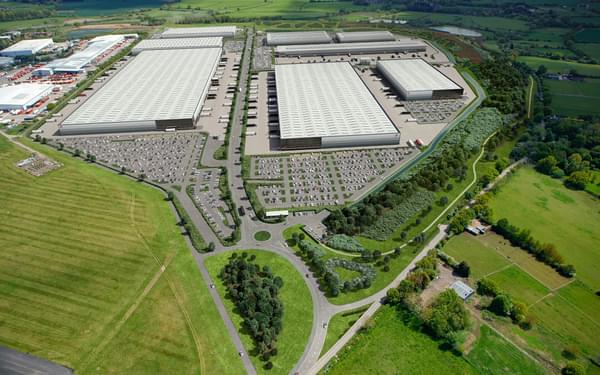Back to Articles
Why London is the perfect platform to make the circular economy work
Phil Guthrie \ 1st Jun 2023
The guidance in the London Plan on delivering a circular economy strategy is remarkably good.
It's the perfect platform to embrace the concept of reuse. But will the built environment sector embrace the intent and use the policy to leverage change? That's the key question.
Why does a circular economy matter?
Waste from construction, demolition and excavation accounts for approximately 60% of overall waste in the UK.
The built environment has a responsibility to extend and adapt buildings beyond one lifecycle, to make materials returnable and to shift to thinking about resources not waste.
Circular economy principles will help with both the immediate and long-term climate crisis. If a building is likely to be repurposed in 30 to 50 years' time, decisions taken today on the materials used, and their impact and sustainability, will have a significant influence on the building's lifecycle and adaptability in decades to come.
The challenge, when everyone in our sector - and indeed society - is still learning about the true impacts of our decisions, is how to embrace new perspectives, think longer-term, and implement the principles of circularity with targets that hold projects and the sector to account.
Circular economy and the London Plan
The London Plan requires a circular economy statement for the largest developments in London that are referable to the Mayor.
Many of the London Boroughs are already asking for circular economy statements on a much wider range of proposed development schemes.
In support of planning submissions, these circular economy statements require evidence to justify the reasons for new build or extensions to existing structures. Whole life carbon assessments of the different options around demolition, new build, rebuild and refurbishment are needed to show which has least impact and to justify and quantify the decision taken.
The challenge is to quantify impacts and set meaningful targets.
The danger facing circular economy statements is that they become a tick-box with no meaningful application. However, if the industry uses the guidance in the spirit it's been written in, there is an opportunity to drive real change in the way we treat building materials, retain structures and adapt buildings over their lifetime.
Why the London Plan circular economy guidance is an exemplar
As in all walks of life, simplicity and clarity hold the key to success.
Whilst the London Plan Guidance Circular Economy Statements require a lot of information and careful thought, in my opinion it has the right intent and is asking valuable questions.
The guidance is a good piece of policy and has many advantages:
- All the principles are detailed and listed
- Each step is clearly broken down
- It sets out what to do at each design stage
- It shows how it fits into the planning process
- It lists what needs to be documented
The challenge is how the construction industry uses it to make our buildings and infrastructure better.
Six tips for creating an effective circular economy statement
The guidance in the London Plan provides a perfect platform to deliver a meaningful approach to circularity. So, what are our top tips to make the strategy effective?
- Collaboration - all relevant stakeholders must be engaged. Success is a result of everyone's input. The construction team and the whole supply chain need to be engaged at an early stage to contribute ideas on how a building can be constructed sustainably with the application of the most appropriate circular principles for long-term adaptability.
- Data - a robust methodology for collating and categorising information on the materials used is critical. It will help make informed, responsible design decisions. It will also help establish metrics that can be tracked and measured to inform future decision-making.
- Comprehensive surveys and audits - detailed pre-demolition audits are essential. This will establish what materials can be reused or recycled, an important factor in achieving easy, quick and quantifiable 'wins'. The percentage of reuse that can be achieved is arguably the most important metric to establish.
- Identify linkages - especially relevant at a masterplan level, understanding how connections can be made between key elements of a masterplan strategy will drive a positive approach to circularity. For example, understanding the links between energy, waste, transport, water, ecology, landscape and materials.
- Long-term vision - think about a building or an asset at each stage of its potential lifecycle. Think about it during construction, it's first use, at the end of it's first life, it's next life and so on. Consider what's important to the design to make it, and its constituent parts and materials, usable and reusable for as long as possible.
- Pragmatic design principles - architectural vision remains important, we all want to be visibly inspired by our environments. However, waste can be minimised by designing to more standard dimensions and units, and by researching and seeking out the minimum number and amount of materials needed for construction.
Realising the benefits of circularity
Investors recognise the impact that the built environment and construction industry can have on the environment, and the requirement for change is evident in ESG principles, investment decisions and planning policy.
There is no dispute that the concept of circularity is complex in our sector. However, if we can work together, the benefits are significant in terms of creating new markets and jobs in the world of repurposing materials, remanufacturing, and reusing products. The further benefits in reducing waste, using less materials and adapting what we have, is significant on cost, the economy and the environment.
The London Plan has set a benchmark to establish robust circular economy principles. It certainly makes us excited to work with the rest of the industry to make it a reality.














